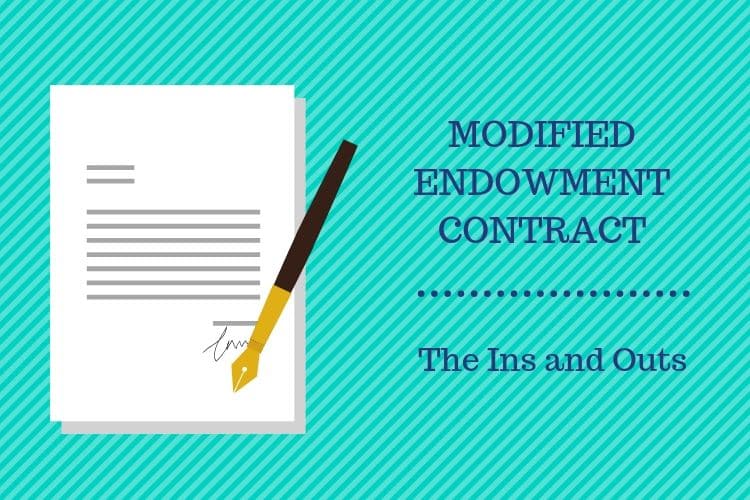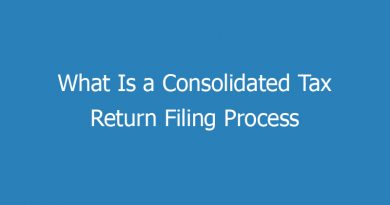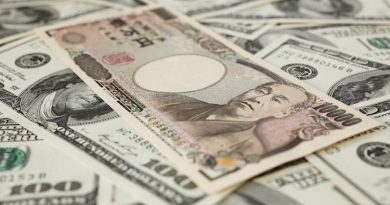Modified Endowment Contract MEC Definition and Tax Implication

Contents
- 1 Modified Endowment Contract (MEC): Definition and Tax Implication
- 1.1 What Is a Modified Endowment Contract (MEC)?
- 1.2 Understanding Modified Endowment Contracts (MECs)
- 1.3 Tax Implications of an MEC
- 1.4 Pros and Cons of MECs
- 1.5 Pros Explained
- 1.6 Cons Explained
- 1.7 How Are Taxes on Gains Figured in an MEC?
- 1.8 What Triggers an MEC?
- 1.9 How Can You Avoid MEC Status?
- 1.10 What Are the Likely Tax Consequences of an Early Withdrawal Under an MEC?
- 1.11 Is a Modified Endowment Contract a Good Thing?
- 1.12 The Bottom Line
Modified Endowment Contract (MEC): Definition and Tax Implication
What Is a Modified Endowment Contract (MEC)?
A modified endowment contract (MEC) is a cash value life insurance policy that has lost its tax benefits due to excessive cash. Once the Internal Revenue Service (IRS) classifies your life insurance policy as an MEC, you lose the tax breaks for withdrawals and loans. This happens when you pay excess premiums too quickly.
Permanent life insurance contracts in the U.S. have tax advantages, but exceeding the cash limit changes the policy into an investment rather than insurance. The MEC limits depend on the policy’s terms and death benefit. Your insurance company will notify you if your policy is or is about to become an MEC.
Key Takeaways
- A modified endowment contract (MEC) is a cash value life insurance policy that loses tax benefits due to excessive cash.
- IRS limits on cash in a policy prevent the abuse of tax advantages.
- A policy must fail the "seven-pay test" to be considered an MEC.
- MECs may provide a better low-risk yield than savings accounts and can simplify asset transfer upon the owner’s death.
Understanding Modified Endowment Contracts (MECs)
A modified endowment contract occurs when the IRS no longer recognizes a policy as life insurance because the collected premiums and cash value exceed tax-law limits. The limit is set based on IRS rules for the maximum premiums paid in the policy’s first seven years. This classification prevents financial products from being called "life insurance" to avoid taxes.
In the 1970s, life insurers offered policies with substantial cash value accumulation for tax-free growth. Policyholders could withdraw interest and principal tax-free, making these policies tax shelters. Legislation in 1988 limited this practice.
Some policyholders overfund a policy with cash value and take periodic loans, effectively turning the policy into an investment. However, this reduces the death benefit for heirs. If your children are grown and you have enough retirement resources, this approach may appeal, but be aware of the cash value limits that may trigger MEC status.
Criteria for an MEC, Including Seven-Pay Test
An MEC meets three criteria according to the IRS:
- The policy was entered into on or after June 20, 1988.
- It meets the statutory definition of a life insurance policy.
- It fails the Technical and Miscellaneous Revenue Act of 1988 (TAMRA) "seven-pay test."
The seven-pay test determines if the total premiums paid within the first seven years exceed what is needed to pay it up in full for those seven years. Policies become MECs when premiums paid exceed this amount.
Policies entered into before June 20, 1988, don’t have premium payment restrictions. However, renewing an older policy after this date is considered a new policy and subjected to the seven-pay test.
Using a Paid-Up Additional (PUA) Rider to Avoid an MEC
A life insurance policy can avoid becoming an MEC by keeping the cash value below the death benefit amount (known as the corridor).
To avoid MEC status, you can increase the death benefit through paid-up additional insurance (PUA), which raises the corridor. PUA insurance is additional coverage purchased with policy dividends.
Tax Implications of an MEC
Gains within an MEC and withdrawals are subject to taxation. The cost basis, equal to the total paid into the policy, isn’t taxed. Any cash value above the cost basis counts as interest gains.
Unlike traditional life insurance policies, MEC withdrawals are considered regular income for tax purposes. Taxes on withdrawals are worse for MEC policyholders because taxable interest is distributed first.
Withdrawals from an MEC are similarly taxed to non-qualified annuity withdrawals. Early withdrawals before age 59 1/2 may incur a 10% penalty.
Another drawback of an MEC is the loss of tax benefits for policy loans. Taking out gains through a loan counts as a taxable withdrawal. Loans operate under a last-in-first-out (LIFO) accounting method, with gains distributed first. After gaining, you can borrow the remaining cash value, representing premiums paid, without taxes.
MEC death benefits remain tax-free. They are useful for estate planning and allow policy owners to leave a significant sum to their beneficiaries.
Pros and Cons of MECs
- Offers higher yield on low-risk funds
- Allows for smooth, tax-free asset transfer after death
- Provides the ability to borrow against the cash value
- Erases tax advantages for withdrawals and loans
- Limits access to the cash value
- Borrowing may reduce the death benefit for heirs
Pros Explained
Higher Yield on Low-Risk Funds
MECs often offer a higher yield on low-risk funds than savings accounts or CDs.
Tax-Free Asset Transfer After Death
MECs allow tax-free asset transfer to beneficiaries upon the owner’s death.
Can Be Borrowed Against
MECs allow borrowing against the cash value, although taxes apply to withdrawals.
One major downside of MECs is their permanence once triggered.
Cons Explained
Lost Tax Advantages
Withdrawals and loans from an MEC are taxed and potentially penalized, erasing tax advantages.
Cash Value Is Less Accessible
Funds in an MEC are less accessible compared to a life insurance policy due to potential taxes on withdrawals and loans.
Borrowing May Reduce Death Benefit
Borrowing against the cash value lowers the eventual benefit paid to heirs.
How Are Taxes on Gains Figured in an MEC?
Taxes on gains are regular income for MEC withdrawals. The cost basis, or total premiums paid, in MEC withdrawals aren’t taxed.
What Triggers an MEC?
An MEC is triggered when the amount of cash in a permanent life insurance policy exceeds legal limits for insurance classification. The IRS uses the seven-pay test to determine MEC status. It evaluates if the premiums paid within the first seven years would exceed the amount required to pay the policy in full after seven years.
How Can You Avoid MEC Status?
Avoiding MEC status involves keeping the amount of cash in the policy below the required corridor below the death benefit. One solution is to increase the death benefit through paid-up additional insurance (PUA).
What Are the Likely Tax Consequences of an Early Withdrawal Under an MEC?
Withdrawals are taxed similarly to non-qualified annuity withdrawals. Early withdrawals before age 59 1/2 may require a 10% penalty. MEC death benefits are tax-free.
Is a Modified Endowment Contract a Good Thing?
Converting a life insurance policy to an MEC isn’t generally recommended due to the loss of tax advantages. However, MECs can be useful for estate planning in specific situations.
The Bottom Line
An MEC is a cash value life insurance policy stripped of tax benefits due to excessive cash. Once classified by the IRS as an MEC, withdrawals and loans are taxed. While usually disadvantageous, MECs may provide higher low-risk yields than savings accounts and ease asset transfer upon the owner’s death.
An MEC is a cash value life insurance policy stripped of tax benefits due to excessive cash. Once classified by the IRS as an MEC, withdrawals and loans are taxed. While usually disadvantageous, MECs may provide higher low-risk yields than savings accounts and ease asset transfer upon the owner’s death.



